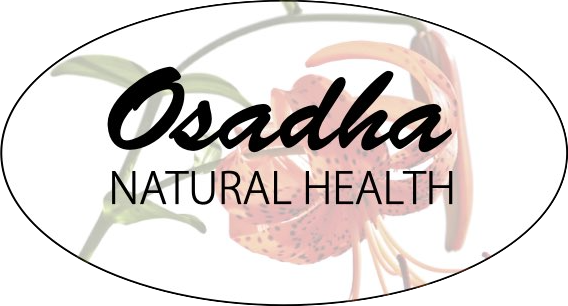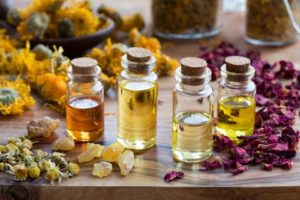Have you ever used rose water? Divine, isn’t it? Real rose water — one of the most popular cosmetics in the world — is technically a hydrosol, a scented water produced by distillation of fresh rose petals. Distillation is when you use steam to extract plant components, especially scented components. Hydrosols used to be thrown away as a byproduct of essential oil distillation, but now folks are recognizing how great the hydrosols themselves are. They’re saving them during essential oil distillation or even doing hydrosol-specific distillations.
Hydrosols are fun to make and are super useful in skin care, perfumery and cooking. They make great room sprays, deodorants and facial toners. You can use them as a cooling or uplifting spritzer, a bug repellent, for energetic protection or to just enjoy the scent. Ever had rice pudding with rose or lavender water? It’s seriously delicious.
Aside from rose and lavender, you can make hydrosols out of aromatic flowers, leaves, citrus peel, roots, seeds or any other other plant bits. As long as they have a scent. Get wild; go out and harvest some wild mint, pine needles, sage brush or juniper for your hydrosol. Or visit the garden for lemon balm, calendula, sage, thyme or oregano. Or raid your spice rack for black pepper, cardamom, coriander, ginger or clove. Don’t forget about resins…you can make hydrosols out of frankincence, myrrh, copol and others. You can even blend hydrosols together for a more complex scent. For instance, frankincense, lavender and juniper are one of my favorite blends for centering, and simply for the scent. Co-distilling plants together is another option, though you may not be able to do the optimal distillation time for each plant…this is why I save the combining until afterwards. More on distillation time in a moment.
Sometimes what is sold as a hydrosol is actually water spiked with essential oil. This is not equivalent to a real hydrosol, which contains water-soluble plant compounds, plant acids that are great for the skin as well as small amounts of essential oil. Hydrosols are not as strong as purified essential oils, so they can usually be used undiluted on the skin.
Making your own collection of hydrosols doesn’t require any specialized equipment…it can be done with your stove and common stuff found in the kitchen.
Making a hydrosol
Stuff needed
- Aromatic plant material
- Distilled or spring water
- Medium to large stainless steel or ceramic pot and lid
- Ice
- Glass or stainless steel bowl
- 2 small turkey basters
- Lid from a canning jar (the insert isn’t needed)
Directions
- Place the canning jar lid in the pot on a stove burner.
- Place the bowl for collecting the hydrosol on top of the canning jar lid.
- Add the plant, being careful not to get any in the collection bowl. I generally use several large handfuls, depending on the plant. Less for denser stuff like berries or resins, more for fluffy stuff like leaves.
- Add enough water to submerge the plant by about 1/2 inch.
- Place the pot lid upside down on top of the pot and top the lid with as much ice as will fit.
- Turn on the burner on low. You want the water hot enough that it steams but isn’t boiling like crazy.
- Use one of the turkey basters to remove and discard the melting ice water from the top of the lid. Replace with fresh ice. (If you have a large/deep lid you may not have to do this, by mine’s kinda shallow so I have to constantly remove water and add more ice. Yes, I know I need a better lid…
- Generally, 20 minutes is a reasonable time to distill. But see the notes below.
- Turn off heat. Let the set up cool a bit. Carefully remove the lid without spilling any melted ice water into the collection bowl.
- Collect what you’ve got in the bowl.
- If you’ve made a lot of hydrosol, store it in the fridge. It’s fine, however, to have some out in a jar or spray bottle for use.
Notes on distillation time
So, the timing. How long it takes to capture the best scent depends on what botanical you’re distilling and your set up. If you don’t distill long enough you obviously won’t get much hydrosol. If you go too long, you’ll start diluting out your hydrosol with unwanted plant chemicals that don’t necessarily smell great. A way to deal with this is to collect the hydrosol a few times during the distillation process and store each collection in a separate jar. I first collect the distillate about 8-10 minutes into the distillation then every 5 minutes after this as follows:
- Using pot holders or gloves, carefully remove the ice-covered lid and set aside on another pot or bowl. Be very careful not to get a steam burn or to burn yourself on the pot. Also be careful not to drip the melting ice water from the lid into the collection bowl.
- Using the remaining turkey baster (or a pipette if you know what that is), remove the hydrosol from the collection bowl and put into a jar.
- Replace the lid/ice and continue distilling.
- Repeat until the fractions start smelling not as good. This means it’s time to stop the distillation.
- Combine those fractions that smell good and discard those that don’t.
Keep a notebook to write the details for each botanical you distill. Then the next time you distill something, you can look up the timing from your book and skip all the fraction collecting…you’ll already know when to stop.
Enjoy!
~~~
Content © Dr. Anna Marija Helt, Osadha Natural Health, LLC. Permission to republish any of the articles or videos in full or in part online or in print must be granted by the author in writing.
The articles and videos on this website for educational purposes only & have not been evaluated by the Food and Drug Administration. This information is not intended to diagnose, treat, cure, or prevent any disease or to substitute for advice from a licensed healthcare provider.

